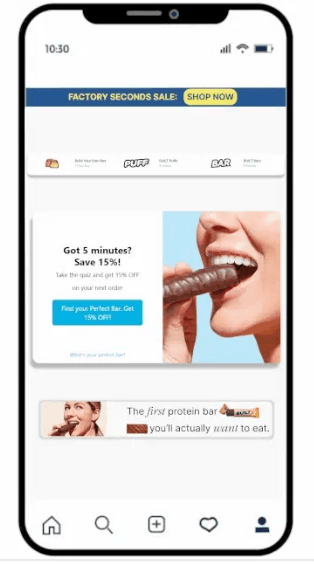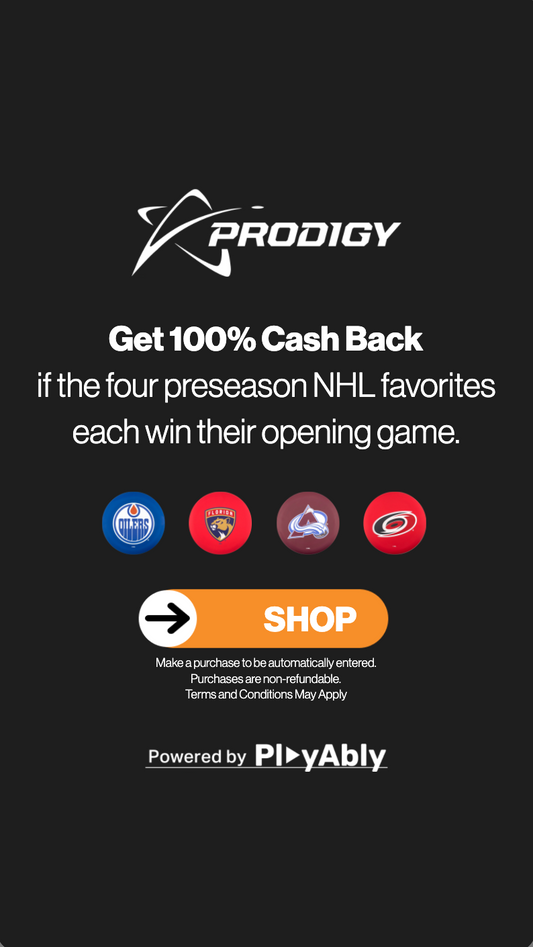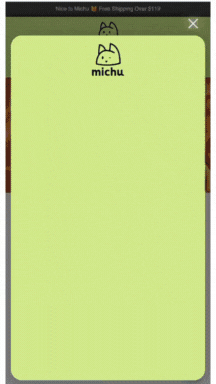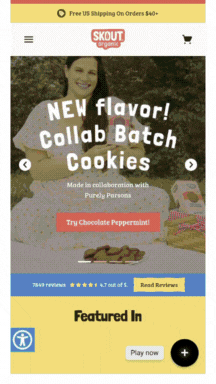Personalized eCommerce Experiences: How Gamification Enhances Shopping
Vintage Cars Customizable Game
Creating Customer Journeys Experiences in eCommerce with Gamification
Download The Guide
In today’s competitive eCommerce market, personalization is key to capturing customer attention and building loyalty. Gamification provides an innovative way to personalize the shopping experience, making it feel more engaging and tailored to individual needs. By adding elements like interactive quizzes, personalized rewards, and real-time feedback, brands can create a shopping journey that feels unique to each customer. This guide explores how gamification enhances personalization, helping brands build connections that keep customers coming back.
The Role of Gamification in Personalization
Gamification turns shopping into an interactive experience, allowing brands to provide personalized recommendations, rewards, and milestones. Studies show that personalized experiences can increase sales by up to 20%, as customers feel more connected to brands that recognize their preferences. When combined with gamification, personalization becomes even more effective, as it adds a layer of engagement that makes the experience enjoyable and memorable.
Vintage Cars Customizable Game
Gamification and conversion optimization go hand in hand. While gamification keeps users engaged, conversion optimization ensures that engagement leads to action—whether that’s making a purchase.
Download The GuideGamification Techniques for a Personalized Shopping Journey
1. Personalized Product Quizzes
Product quizzes are a fun way for customers to discover items that suit their preferences. By answering a few targeted questions, customers receive personalized product recommendations that feel tailored to their style, needs, or lifestyle. These quizzes make the shopping experience feel more interactive, guiding customers toward products they’re more likely to purchase.
Best practices for personalized quizzes include:
- Keeping the quiz short and focused to maintain engagement.
- Using data from quiz responses to recommend products that closely match customer preferences.
- Following up with personalized email recommendations based on quiz results.
2. Tailored Rewards and Loyalty Programs
Gamified loyalty programs allow brands to offer rewards and incentives based on individual shopping habits. By analyzing customer data, brands can offer tailored rewards that align with each customer’s preferences, creating a more meaningful loyalty experience. For example, a frequent shopper might receive a “Thank You” discount for repeat purchases, while a customer who engages with the brand on social media could earn bonus points.
Personalized loyalty rewards make customers feel valued, increasing their likelihood to stay engaged. Data shows that loyalty programs offering personalized rewards see higher redemption rates, as customers are more motivated to earn rewards they find relevant.
3. Customized Progress Tracking and Milestones
Progress tracking in a gamified loyalty program adds a sense of accomplishment to the shopping experience. Showing customers how close they are to their next reward—like reaching a new loyalty tier or unlocking a discount—motivates them to keep engaging with the brand. By tailoring progress milestones to match customer behavior, brands can create a journey that feels more personal.
To make progress tracking effective:
- Display real-time progress toward milestones, like points accumulation or tier advancement.
- Offer personalized rewards upon reaching milestones, such as early access to new products or exclusive discounts.
- Send progress updates to remind customers of upcoming rewards, encouraging continued engagement.
4. Interactive Product Recommendations
Using gamified elements like swipeable “choose your favorite” games or interactive product carousels lets customers interact directly with recommendations. This approach makes product discovery more engaging, especially on mobile devices. Customers can “like” or “pass” on items, which helps refine recommendations based on their selections.
Interactive product recommendations keep customers engaged longer and provide valuable data about their preferences. Brands that incorporate this method report higher time-on-site metrics, as customers spend more time exploring personalized options.
5. Location-Based Offers and Gamified Notifications
Mobile gamification allows brands to send location-based offers or notifications, personalizing the experience based on where the customer is. For example, customers near a store location might receive an exclusive discount or invitation to visit. This type of gamification creates a tailored experience that feels relevant and timely.
Location-based offers increase engagement by tapping into customers’ surroundings. In fact, studies show that location-based notifications can increase customer visits by up to 30%, making it an effective way to connect with mobile shoppers.
Best Practices for Implementing Personalized Gamification
To ensure that gamified personalization is effective and well-received by customers, keep these best practices in mind:
- Respect Privacy: Ensure that data used for personalization is gathered and stored responsibly. Be transparent about data usage to maintain customer trust.
- Balance Engagement and Subtlety: Personalization should feel natural, not overwhelming. Avoid sending too many notifications or making the experience feel forced.
- Monitor Customer Feedback: Regularly review feedback and adjust gamification elements to better suit customer preferences and enhance the overall experience.
- Test and Optimize: Continuously test gamification features to ensure they are user-friendly, relevant, and engaging across different devices.
Measuring the Impact of Gamified Personalization
To evaluate the effectiveness of gamified personalization, monitor the following metrics:
- Engagement Rate: Track how many users interact with personalized gamified features, such as quizzes or progress tracking.
- Conversion Rate: Measure how often gamified personalization leads to a completed purchase.
- Customer Lifetime Value (LTV): Monitor whether personalized experiences increase the overall lifetime value of customers.
- Customer Satisfaction: Use surveys or feedback tools to gauge how customers feel about the personalized gamification experience.
Strengthening Customer Relationships Through Personalized Gamification
Gamified personalization transforms a typical shopping experience into a journey that feels unique to each customer. By offering tailored recommendations, rewards, and interactive elements, brands can create a shopping experience that resonates on a personal level. Customers are more likely to engage with and return to brands that make them feel recognized and valued.
In a world where personalized experiences drive loyalty, gamification offers a powerful way to create a memorable and meaningful journey for customers. By implementing these strategies, eCommerce brands can enhance the shopping experience, boost engagement, and build lasting customer relationships.



